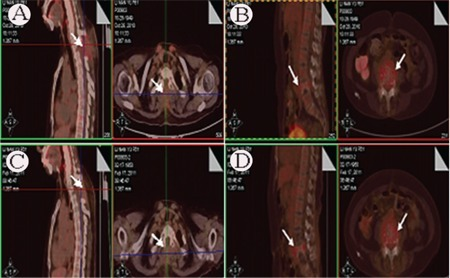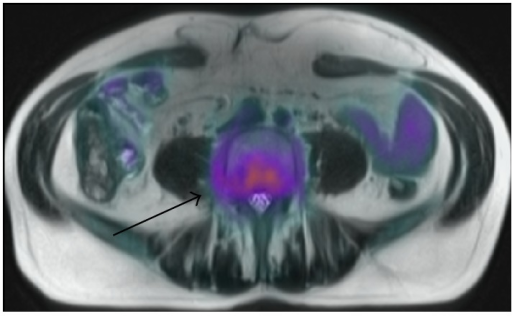Lymphoplasmacytic lymphoma other imaging findings
|
Lymphoplasmacytic lymphoma Microchapters |
|
Differentiating Lymphoplasmacytic Lymphoma from other Diseases |
|---|
|
Diagnosis |
|
Treatment |
|
Case Studies |
|
Lymphoplasmacytic lymphoma other imaging findings On the Web |
|
American Roentgen Ray Society Images of Lymphoplasmacytic lymphoma other imaging findings |
|
Lymphoplasmacytic lymphoma other imaging findings in the news |
|
Risk calculators and risk factors for Lymphoplasmacytic lymphoma other imaging findings |
Editor-In-Chief: C. Michael Gibson, M.S., M.D. [1]; Associate Editor(s)-in-Chief: Sara Mohsin, M.D.[2]
Overview
A PET scan can be helpful in spotting small collections of cancer cells, to detect whether an enlarged lymph node has lymphoma or not, to see the response of treatment, and to help decide whether an enlarged lymph node still contains lymphoma or is merely scar tissue after treatment.
Other Imaging Findings
- A PET scan can be helpful in spotting small collections of cancer cells.[1][2][3][4][5]
- It is even more valuable when combined with a CT scan (PET/CT scan).
- PET scan can also be helpful to tell if an enlarged lymph node contains lymphoma or not.
- It can help spot small areas that might be lymphoma, even if the area looks normal on a CT scan.
- It can be used to tell if a lymphoma is responding to the treatment.
- They can also be used after treatment to help decide whether an enlarged lymph node still contains lymphoma or is merely scar tissue.
 |
 |
References
- ↑ Valls L, Badve C, Avril S, Herrmann K, Faulhaber P, O'Donnell J; et al. (2016). "FDG-PET imaging in hematological malignancies". Blood Rev. 30 (4): 317–31. doi:10.1016/j.blre.2016.02.003. PMC 5298348. PMID 27090170.
- ↑ D'souza MM, Jaimini A, Bansal A, Tripathi M, Sharma R, Mondal A; et al. (2013). "FDG-PET/CT in lymphoma". Indian J Radiol Imaging. 23 (4): 354–65. doi:10.4103/0971-3026.125626. PMC 3932580. PMID 24604942.
- ↑ Friedberg, J. W. (2003). "PET Scans in the Staging of Lymphoma: Current Status". The Oncologist. 8 (5): 438–447. doi:10.1634/theoncologist.8-5-438. ISSN 1083-7159.
- ↑ Banwait, Ranjit; O'Regan, Kevin; Campigotto, Federico; Harris, Brianna; Yarar, Dilek; Bagshaw, Meghan; Leleu, Xavier; Leduc, Renee; Ramaiya, Nikhil; Weller, Edie; Ghobrial, Irene M. (2011). "The role of 18F-FDG PET/CT imaging in Waldenstrom macroglobulinemia". American Journal of Hematology. 86 (7): 567–572. doi:10.1002/ajh.22044. ISSN 0361-8609.
- ↑ Leleu, Xavier; Leduc, Renee; Rourke, Meghan; Harris, Brianna; Roccaro, Aldo M.; Yarar, Dilek; Farag, Jonathan; Ghobrial, Irene M. (2009). "PET/CT a New Marker of Response in Waldenstrom Macroglobulinemia (WM)". Blood. 114 (22): 1937–1937. doi:10.1182/blood.V114.22.1937.1937. ISSN 0006-4971.